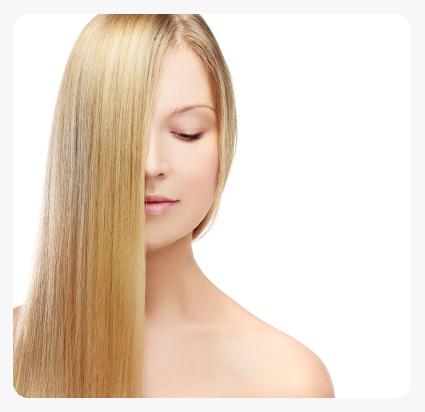Cheryl Locke | March 31, 2014
Field Guide: Hair Anatomy & Tips for Healthier Hair

Image by Madison Reed
Since taking human anatomy in high school, you may not have given much thought to the structure of your hair. Knowing what hair is comprised of, it turns out, is immensely helpful in keeping it healthy and shiny.
 Here’s a quick run down of your hair’s primary elements, along with a few tips to help you keep your hair strong and full of life.
Here’s a quick run down of your hair’s primary elements, along with a few tips to help you keep your hair strong and full of life.
Hair has two structures: the shaft–or the strand–that is visible, and the follicle hidden in the skin. Here’s the breakdown of these two structures:
Cortex: the layer of the hair strand (or shaft) between the cuticle and the medulla. The cortex contains most of your hair’s pigment and is responsible for the color of your hair. When you color your hair, you’re depositing color into the cortex.
TIP for keeping the cortex healthy:
• When coloring your hair, use an ammonia-free hair color like Madison Reed. Ammonia dehydrates and damages the cortex, making your hair dry and brittle.
Cuticle: the outer, scale-like layer of the hair shaft, made of dead cells. Under a microscope, the cuticle looks like a tube of tightly overlapping scales, like a series of shields to protect the cortex. When you color your hair or subject it to heat, you rough up your cuticles, lifting them in order to penetrate the softer layers inside to deposit color or to relax hair. If cuticles are not flattened and smoothed out, you will loose shine and hair will feel rough and look dull.
TIPS for protecting and nourishing cuticles:
• Condition with a keratin-rich formula, like Madison Reed’s Nourishing, Color-Enhancing Conditioner, to strengthen cuticles.
• Avoid heat and severe weather, including sun, wind, and polar vortexes.
Medulla: the innermost layer of the hair shaft. Although the medulla layer can carry a lot of DNA, it often isn’t even present in very fine hair. It’s purpose is generally unknown.
Follicles: tube-like cavities in the skin, whose shape, hooked or straight, determines whether your hair is straight, wavy, or curly.
TIPS for healthy follicles:
• Keep follicles clean and unclogged by avoiding thick gels and combing to break up oil in in your hair.
• Eat a diet rich in iron, beta-carotene, folate, and vitamin C. Spinach is a superfood for follicles.
• Keep extreme heat away from follicles, which can scar, and cause irreversible hair loss.
Sebum: oily/waxy matter produced by sebaceous glands attached to the follicle. Over-production of sebum is not cute and leaves hair oily and greasy, causes acne, and inhibits hair growth. Sebum production can flare due to humid weather, bad diet, or simply because you got the short end of the genetic stick.
TIPS to keep sebum production under control:
• Brush hair gentle and moderately.
• Use water-based shampoos that have antiseptic ingredients like tea tree oil and aloe. An occasional shampoo with a purifying formula can also de-gunk follicles.
• Consume plenty of water, vegetables, and healthy fats, like nuts, olive oil, and omega-3 fish.











